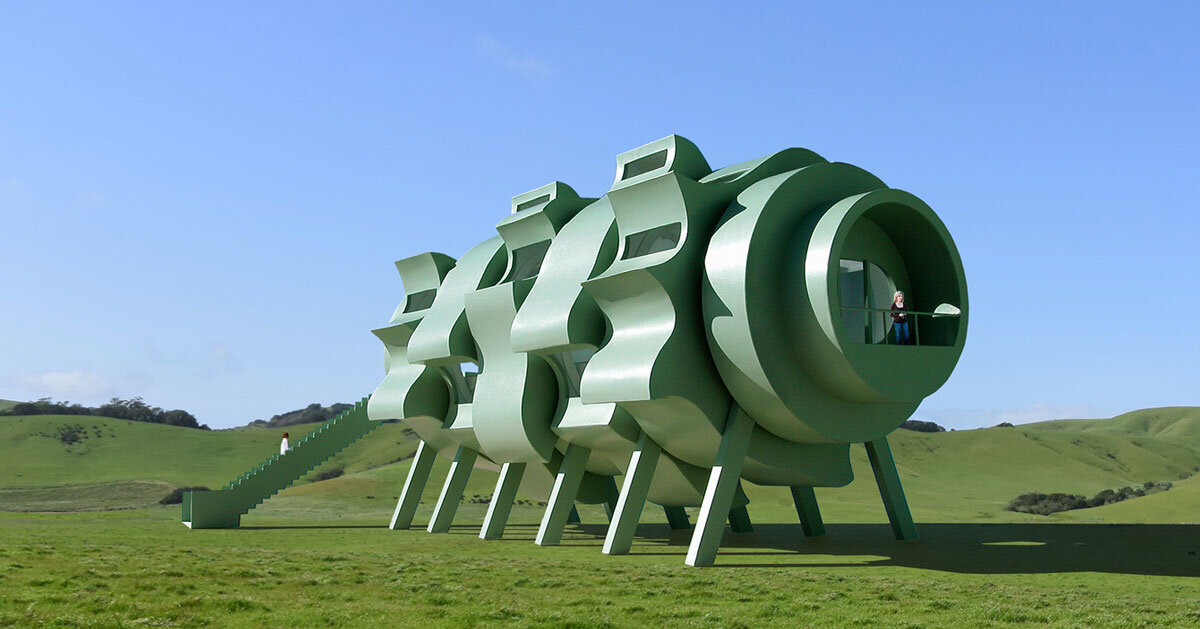
"Constructed primarily from lightweight , the proposed design incorporates photovoltaic cladding to generate electricity for internal systems. The glass floor supported by a steel frame allows for visual continuity and spatial fluidity, enabling occupants to experience a full 360-degree connection with the surrounding environment. Openings in the floor permit air to circulate after being captured by the adjustable wind scoops integrated into the outer segments."
"Each segment shares the same geometric profile but can perform multiple functions depending on orientation. Some feature windows that rotate 360 degrees to direct sunlight or frame specific views, while others act as rainwater collectors or wind channels. The modular system allows the segments to operate independently or in coordination, offering precise environmental control. Inside, furnishings are stored within semicircular cabinets concealed beneath the glass floor."
An adaptive segmented house centers on a core living space encircled by five movable segments that rotate manually or automatically to respond to sunlight, wind, and rainfall and to frame views. Segments orient to warm through solar exposure, cool via air circulation, collect rainwater, and redirect wind through integrated scoops. Construction uses lightweight materials with photovoltaic cladding for on-site electricity. A glass floor on a steel frame creates a continuous visual connection and conceals semicircular storage cabinets that raise and unfold for furnishings. Segments operate independently or together, and additional modules can be added to expand size and functionality.
Read at designboom | architecture & design magazine
Unable to calculate read time
Collection
[
|
...
]